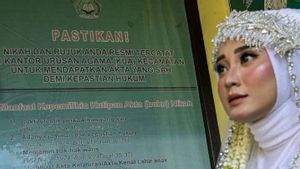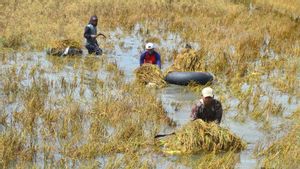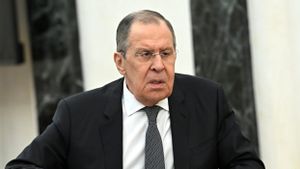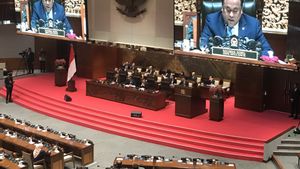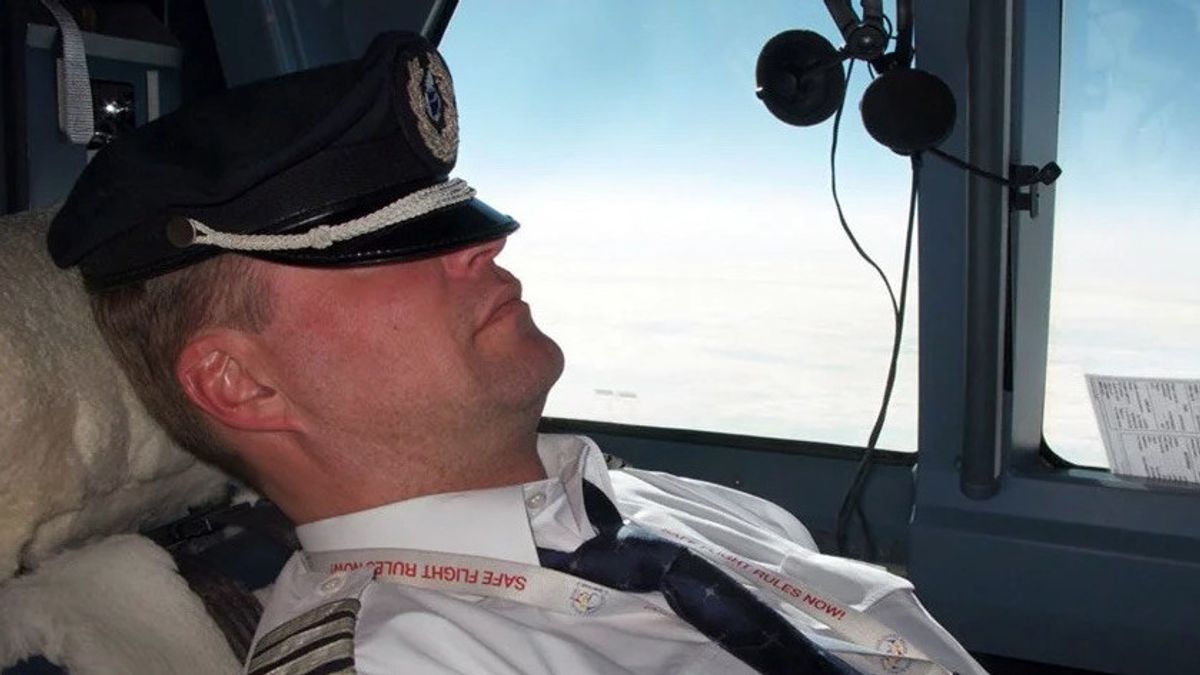
JAKARTA Pilots are usually advised to sleep on flights to avoid the bad effects due to fatigue. However, there are several things that must be considered before the pilot takes a break while in the air.
Can the pilot sleep while flying the plane? This is a question that many have asked after the Batik Air pilot and co-pilot cases fell asleep at the same time for 28 minutes.
This was discovered after the National Transportation Safety Committee (KNKT) released an investigative report on the incident that occurred on January 25. At that time, the Airbus A320 aircraft with registration number PK-LUV operated as a scheduled passenger flight with the Soekarno-Hatta International Airport route in Jakarta to Haluoleo Airport in Kendari, Southeast Sulawesi and then returned to Jakarta.
On a flight from Jakarta to Kendari, thesecond in command (SIC or co-pilot) told the pilot in command (PIC or pilot) that he did not have enough rest because he had just moved home and had to help his wife who had just given birth.
Kopilot asked for permission to rest and he slept for about 30 minutes, but the flight went smoothly until landing in Kendari.
In the opposite direction to Jakarta, when the plane had reached its cruising altitude, the two crew members removed the headset. In its report, the NTSC wrote that the pilot asked SIC for permission to rest and permission was granted. Thus, the co-pilot took the task of pilot monitoring.
When the pilot woke up and offered to take turns taking breaks, the co-pilot replied that he would continue his duties and the pilot returned to sleep. At this moment, the co-pilot runs two and three at once, namely pilot flying and pilot monitoring.
However, the co-pilot, who is known to be 28 years old, fell asleep on the flight. This means that the plane carrying 153 passengers was controlled by a pilot and co-pilot who fell asleep for almost half an hour. Fortunately, the plane was commuting safely at Soekarno-Hatta Airport.
In the midst of the excitement of the case, the public also wondered whether pilots were actually allowed to sleep during the flight considering that it was not uncommon for them to have to work from an early morning and take long-distance flights that took quite a long time.
According to Federal Aviation Administration (FAA) rules, pilots are recommended to rest during air travel for safety. FAR 117 flight regulations state that pilots are required to rest outside the cockpit during long flights lasting at least eight hours or more. On long flights, they usually have backup pilots who are ready to rotate when one of the pilots rests.
Meanwhile, quoted by Flight Deck Friends, pilots are allowed to sleep during flights but of course there are very strict regulations to control this. Pilots usually sleep on long flights, although sleeping on short flights is also allowed to avoid the impact of fatigue.
As many as 68 to 91 percent of commercial airline pilots reportedly experienced fatigue during flights. But this seems not only limited to civil aviation. 72 percent of military pilots admit that they have flown at least once when they are so sleepy that they can easily fall asleep on the flight.
The FAA is aware of the pilot's fatigue and has imposed a strict sleep schedule and flight schedule.
A minimum rest of 10 hours between shifts is required. The pilot must sleep eight hours during this period. The pilot must also get a break for 30 hours in a row every week, "said Sleep Online.
Under certain conditions, the pilot can rest during the flight. There are two categories of rest for the pilot on the flight, namely controlling rest or controlled rest and rest or rest in bed.
Controlled rest is allowed during less demanding flights. The rest time of this category is only about 10-20 minutes or can be said to power nap. This quality sleep can help pilots recover their alertness levels during flights that are usually operated by autopilot.
Controlled rest can provide the pilot with the focus needed for high-risk activity during flights, such as when takeoffs and landings that require full concentration.
On the other hand, the hoard rest is another chance for the pilot to get the time to sleep needed on the flight. Usually beds for pilots and cabin crew are available on long-distance flights.
"As soon as the takeoff, the first pilot will head to the bed for a certain period of rest, before taking turns with the other pilots. This rest time is given to most of the crew, before all pilots return to the cockpit about an hour before flattening," wrote Flight Deck Friend.
Although sleeping in the cockpit during flights is said to be feasible by pilots, The Washington Post says this does not apply in all countries. The United States is among those that prohibit this practice from being carried out.
The ban on sleep in the cockpit during flights applies to US airlines, both domestic and foreign, as well as foreign airlines flying in US airspace.
Aviation experts say US airline crews are allowed to sleep on long flights, but this is only done in predetermined areas, and not in the cockpit, and there must be additional pilots taking turns on duty.
관련 항목:
Patrick Smith, commercial pilot and blog founder Ask the Pilot said the crew on long flights on US airlines would work alternately so they could sleep.
The example of flights from the US to Europe, usually has three pilots. At some time, at least two pilots are in the cockpit and the third pilot rests," Smith said, citing the Washington Post.
"Reses can be in the form of closed chairs in first class or business class, or bedrooms," he added.
The English, Chinese, Japanese, Arabic, and French versions are automatically generated by the AI. So there may still be inaccuracies in translating, please always see Indonesian as our main language. (system supported by DigitalSiber.id)





